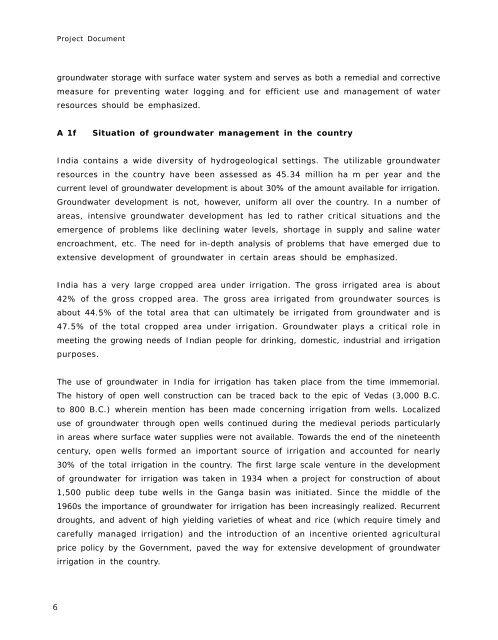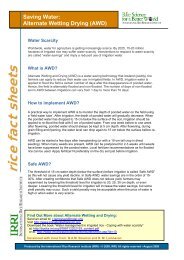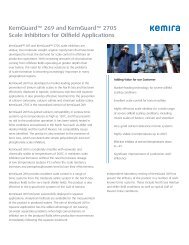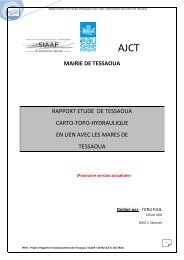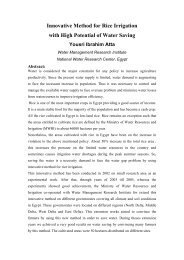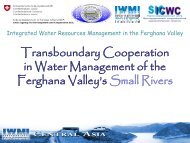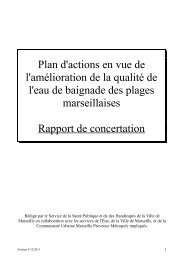FAO Project Document book - Solutions for Water platform - World ...
FAO Project Document book - Solutions for Water platform - World ...
FAO Project Document book - Solutions for Water platform - World ...
You also want an ePaper? Increase the reach of your titles
YUMPU automatically turns print PDFs into web optimized ePapers that Google loves.
<strong>Project</strong> <strong>Document</strong><br />
groundwater storage with surface water system and serves as both a remedial and corrective<br />
measure <strong>for</strong> preventing water logging and <strong>for</strong> efficient use and management of water<br />
resources should be emphasized.<br />
A 1f<br />
Situation of groundwater management in the country<br />
India contains a wide diversity of hydrogeological settings. The utilizable groundwater<br />
resources in the country have been assessed as 45.34 million ha m per year and the<br />
current level of groundwater development is about 30% of the amount available <strong>for</strong> irrigation.<br />
Groundwater development is not, however, uni<strong>for</strong>m all over the country. In a number of<br />
areas, intensive groundwater development has led to rather critical situations and the<br />
emergence of problems like declining water levels, shortage in supply and saline water<br />
encroachment, etc. The need <strong>for</strong> in-depth analysis of problems that have emerged due to<br />
extensive development of groundwater in certain areas should be emphasized.<br />
India has a very large cropped area under irrigation. The gross irrigated area is about<br />
42% of the gross cropped area. The gross area irrigated from groundwater sources is<br />
about 44.5% of the total area that can ultimately be irrigated from groundwater and is<br />
47.5% of the total cropped area under irrigation. Groundwater plays a critical role in<br />
meeting the growing needs of Indian people <strong>for</strong> drinking, domestic, industrial and irrigation<br />
purposes.<br />
The use of groundwater in India <strong>for</strong> irrigation has taken place from the time immemorial.<br />
The history of open well construction can be traced back to the epic of Vedas (3,000 B.C.<br />
to 800 B.C.) wherein mention has been made concerning irrigation from wells. Localized<br />
use of groundwater through open wells continued during the medieval periods particularly<br />
in areas where surface water supplies were not available. Towards the end of the nineteenth<br />
century, open wells <strong>for</strong>med an important source of irrigation and accounted <strong>for</strong> nearly<br />
30% of the total irrigation in the country. The first large scale venture in the development<br />
of groundwater <strong>for</strong> irrigation was taken in 1934 when a project <strong>for</strong> construction of about<br />
1,500 public deep tube wells in the Ganga basin was initiated. Since the middle of the<br />
1960s the importance of groundwater <strong>for</strong> irrigation has been increasingly realized. Recurrent<br />
droughts, and advent of high yielding varieties of wheat and rice (which require timely and<br />
carefully managed irrigation) and the introduction of an incentive oriented agricultural<br />
price policy by the Government, paved the way <strong>for</strong> extensive development of groundwater<br />
irrigation in the country.<br />
6


